L-酒石酸氢钠, 无水, ≥99%,Sodium bitartrate monohydrate
产品编号:西域试剂-WR132408| CAS NO:526-94-3| MDL NO:MFCD00065393| 分子式:C4H5NaO6| 分子量:172.0700
本网站销售的所有产品仅用于工业应用或者科学研究等非医疗目的,不可用于人类或动物的临床诊断或者治疗,非药用,非食用,
| 产品名称 | L-酒石酸氢钠, 无水, ≥99% |
|---|---|
| 英文名称 | Sodium bitartrate monohydrate |
| CAS编号 | 526-94-3 |
| 产品熔点 | 253 °C (dec.)(lit.) |
| 产品沸点 | 399.3ºC at 760mmHg |
| 产品闪点 | 209.4ºC |
| 精确质量 | 171.998383 |
| PSA | 117.89000 |
| 外观性状 | 白色结晶粉末 |
| 溶解性 | H2O: 0.1 M at 20 °C, clear, colorless |
| 稳定性 | 按规格使用和贮存,不会发生分解,避免与氧化物接触 |
| 储存条件 | 1.储存于阴凉、干燥、通风良好的库房。 2.远离火种、热源。防止阳光直射。包装密封。 3.应与酸类、食用化学品分开存放,切忌混储。储区应备有合适的材料收容泄漏物。 |
相关文档
化学品安全说明书(MSDS)
下载MSDS质检证书(COA)
相关产品
| 个人防护装备 | Eyeshields;Gloves;type N95 (US);type P1 (EN143) respirator filter |
|---|---|
| 安全声明 (欧洲) | S22-S24/25 |
| 危险品运输编码 | NONH for all modes of transport |
| WGK德国 | 2 |
| RTECS号 | WW8225000 |
| 海关编码 | 2918199090 |
Synonym:Butanedioic acid, 2,3-dihydroxy- (2R,3R)-, monosodium salt, monohydrate; Sodium hydrogen tartrate monohydrate Section 2 - COMPOSITION, INFORMATION ON INGREDIENTS
Risk Phrases: None Listed. Section 3 - HAZARDS IDENTIFICATION EMERGENCY OVERVIEW
Not available. Potential Health Effects Eye: May cause eye irritation. Skin: May cause skin irritation. Ingestion: May cause irritation of the digestive tract. Inhalation: May cause respiratory tract irritation. Chronic: May cause kidney damage. Section 4 - FIRST AID MEASURES Eyes: In case of contact, immediately flush eyes with plenty of water for at least 15 minutes. Get medical aid. Skin: In case of contact, flush skin with plenty of water. Remove contaminated clothing and shoes. Get medical aid if irritation develops and persists. Wash clothing before reuse. Ingestion: If swallowed, do not induce vomiting unless directed to do so by medical personnel. Never give anything by mouth to an unconscious person. Get medical aid. Inhalation: If inhaled, remove to fresh air. If not breathing, give artificial respiration. If breathing is difficult, give oxygen. Get medical aid. Notes to Physician: Section 5 - FIRE FIGHTING MEASURES General Information: As in any fire, wear a self-contained breathing apparatus in pressure-demand, MSHA/NIOSH (approved or equivalent), and full protective gear. Dusts may be combustible when exposed to heat, flame, or oxidizing agents. Extinguishing Media: For small fires, use water spray, dry chemical, carbon dioxide or chemical foam. Section 6 - ACCIDENTAL RELEASE MEASURES General Information: Use proper personal protective equipment as indicated in Section 8. Spills/Leaks: Vacuum or sweep up material and place into a suitable disposal container. Avoid generating dusty conditions. Provide ventilation. Section 7 - HANDLING and STORAGE Handling: Wash thoroughly after handling. Use with adequate ventilation. Minimize dust generation and accumulation. Avoid contact with eyes, skin, and clothing. Keep container tightly closed. Avoid breathing dust. Storage: Store in a cool, dry, well-ventilated area away from incompatible substances. Section 8 - EXPOSURE CONTROLS, PERSONAL PROTECTION Engineering Controls: Facilities storing or utilizing this material should be equipped with an eyewash facility and a safety shower. Use adequate ventilation to keep airborne concentrations low. Exposure Limits CAS# 526-94-3: CAS# 6131-98-2: Personal Protective Equipment Eyes: Wear appropriate protective eyeglasses or chemical safety goggles as described by OSHA's eye and face protection regulations in 29 CFR 1910.133 or European Standard EN166. Skin: Wear appropriate gloves to prevent skin exposure. Clothing: Wear appropriate protective clothing to minimize contact with skin. Respirators: Follow the OSHA respirator regulations found in 29 CFR 1910.134 or European Standard EN 149. Use a NIOSH/MSHA or European Standard EN 149 approved respirator if exposure limits are exceeded or if irritation or other symptoms are experienced. Section 9 - PHYSICAL AND CHEMICAL PROPERTIES Physical State: Crystalline powder Color: white Odor: none reported pH: acidic in solution Vapor Pressure: Not applicable. Viscosity: Not applicable. Boiling Point: Not applicable. Freezing/Melting Point: Not available. Autoignition Temperature: Not available. Flash Point: Not applicable. Explosion Limits, lower: Not available. Explosion Limits, upper: Not available. Decomposition Temperature: 426 deg F Solubility in water: Soluble. Specific Gravity/Density: Not available. Molecular Formula: C4H6O6.Na.H2O Molecular Weight: 190.09 Section 10 - STABILITY AND REACTIVITY Chemical Stability: Stable under normal temperatures and pressures. Conditions to Avoid: High temperatures, dust generation. Incompatibilities with Other Materials: Strong oxidizing agents. Hazardous Decomposition Products: Carbon monoxide, carbon dioxide. Hazardous Polymerization: Has not been reported Section 11 - TOXICOLOGICAL INFORMATION RTECS#: CAS# 526-94-3: WW8225000 CAS# 6131-98-2 unlisted. LD50/LC50: CAS# 526-94-3: Oral, mouse: LD50 = 4360 mg/kg. CAS# 6131-98-2. Carcinogenicity: Sodium hydrogen tartrate, anhydrous - Not listed by ACGIH, IARC, or NTP. Sodium bitartrate monohydrate - Not listed by ACGIH, IARC, or NTP. Other: See actual entry in RTECS for complete information. Section 12 - ECOLOGICAL INFORMATION Section 13 - DISPOSAL CONSIDERATIONS Products which are considered hazardous for supply are classified as Special Waste and the disposal of such chemicals is covered by regulations which may vary according to location. Contact a specialist disposal company or the local waste regulator for advice. Empty containers must be decontaminated before returning for recycling. Section 14 - TRANSPORT INFORMATION IATA Not regulated as a hazardous material. IMO Not regulated as a hazardous material. RID/ADR Not regulated as a hazardous material. Section 15 - REGULATORY INFORMATION European/International Regulations European Labeling in Accordance with EC Directives Hazard Symbols: Not available. Risk Phrases: Safety Phrases: WGK (Water Danger/Protection) CAS# 526-94-3: 1 CAS# 6131-98-2: No information available. Canada CAS# 526-94-3 is listed on Canada's DSL List. CAS# 526-94-3 is not listed on Canada's Ingredient Disclosure List. CAS# 6131-98-2 is not listed on Canada's Ingredient Disclosure List. US FEDERAL TSCA CAS# 526-94-3 is listed on the TSCA inventory. CAS# 6131-98-2 is not on the TSCA Inventory because it is a hydrate. It is considered to be listed if the CAS number for the anhydrous form is on the inventory (40CFR720.3(u)(2)). SECTION 16 - ADDITIONAL INFORMATION N/A |
|
~% 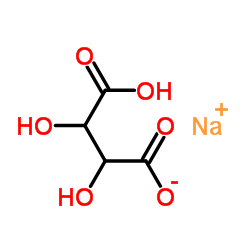
526-94-3 |
| 文献:Lowry; Morgan Journal of the American Chemical Society, 1924 , vol. 46, p. 2192 Full Text View citing articles Show Details Docters van Leeuwen, J. Z. phys. Ch., 1897 , vol. 23, p. 34 - 38 Full Text Show Details Gmelin Handbook: K: MVol.6, 2.18.2.4, page 1217 - 1218 |
|
~% 
526-94-3 |
| 文献:Gmelin Handbook: K: MVol.5, 1.8.3, page 963 - 965 |
|
~% 
526-94-3 |
| 文献:Gmelin Handbook: K: MVol.6, 2.16, page 1162 - 1164 |


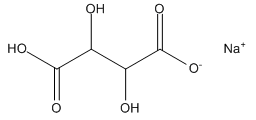

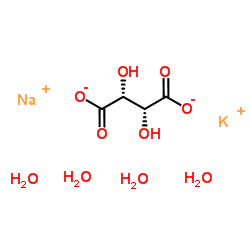
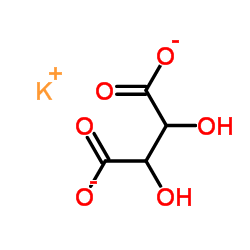
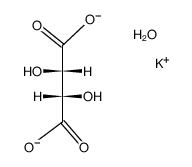
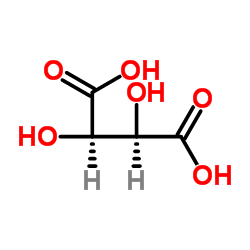

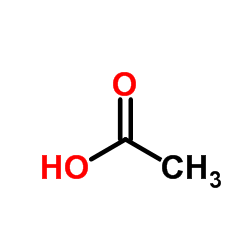
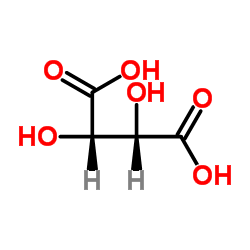





 浙公网安备 33010802013016号
浙公网安备 33010802013016号